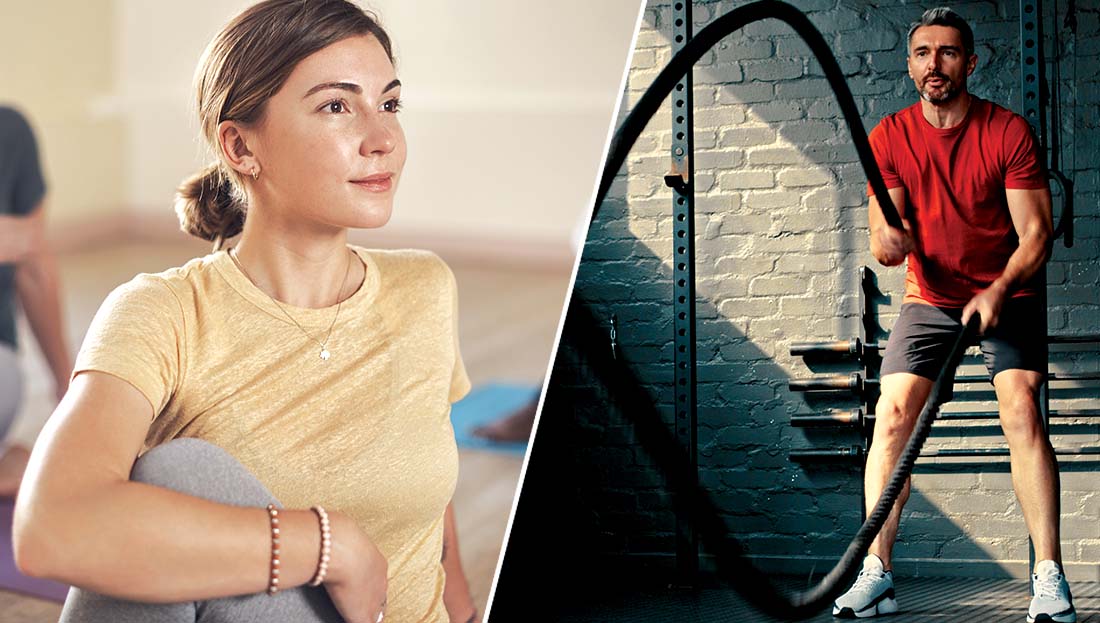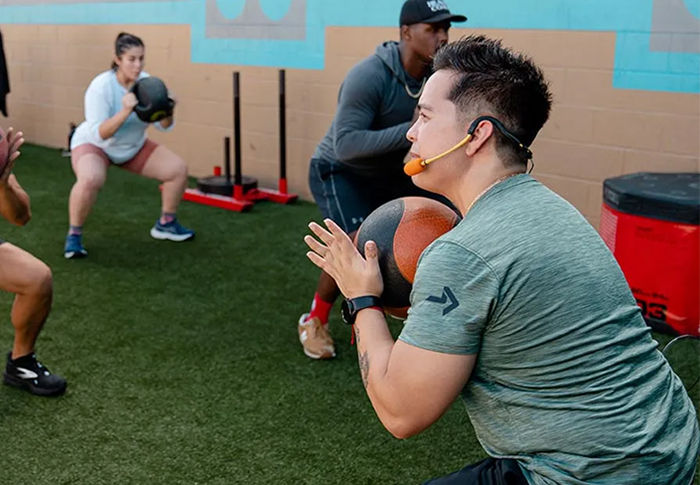
Matching Workout Intensity to Personality: Practical Takeaways for Coaches and Trainers

A new University College London study offers a practical framework for tailoring exercise using personality science. Working with community adults, the researchers examined whether Big Five personality traits—Openness, Conscientiousness, Extraversion, Agreeableness and Neuroticism—predicted baseline fitness, which types of sessions participants enjoyed most and who experienced the greatest drop in perceived stress after an eight-week program of home-based aerobic and strength training. Of particular interest to health and exercise professionals is the finding that certain traits aligned with distinct enjoyment patterns and fitness profiles, and people higher in neuroticism saw the most meaningful reduction in stress after training.
“We know that the global population is becoming increasingly sedentary,” says first author Dr. Flaminia Ronca. “You often hear about people trying to become more active but struggling to make lasting changes. In this study, we wanted to understand how personality can influence this to support the development of effective interventions for changes in health behavior. We found some clear links between personality traits and the type of exercise the participants enjoyed most….We could potentially use this knowledge to tailor physical activity recommendations to the individual.”
Read on to learn more about these links and how they might inform the guidance you offer your clients.
The Big Five Personality Traits
The Big Five model describes broad, relatively stable patterns in how people think, feel and behave. You can use these cues to fine-tune coaching style, session structure and accountability—without boxing clients in.
- Openness to Experience
Curiosity, imagination and preference for novelty. Coaching cue: Offer variety and new modes; introduce complexity gradually if intense work feels aversive. - Conscientiousness
Organization, reliability and goal orientation. Coaching cue: Provide clear plans, progress markers and routines—these clients thrive on structure. - Extraversion
Sociability, energy and sensation seeking. Coaching cue: Leverage group settings, partner work and occasional high-intensity challenges for motivation. - Agreeableness
Cooperativeness, empathy and a desire for harmony. Coaching cue: Emphasize supportive environments and collaborative goal setting; steady aerobic work often fits well. - Neuroticism
Tendency toward worry, sensitivity to stress and emotional volatility. Coaching cue: Favor autonomy-supportive sessions, shorter intervals and light-touch monitoring to build confidence and deliver stress relief.
The Study Explained
The team recruited 132 volunteers that represented a range of ages and fitness levels, then assigned them either to an eight-week exercise intervention—three cycling sessions each week plus one body-weight strength session—or to a resting control group. Participants completed baseline testing of aerobic capacity and simple field measures of muscular fitness, reported their Big Five traits (see sidebar) using a brief inventory and rated perceived stress on a 1–10 scale. The stress ratings were repeated after the intervention and participants logged their enjoyment of sessions during the first week. Of the 132 volunteers, 86 completed the intervention, and everyone who finished became fitter and stronger regardless of personality.
The aerobic plan was individualized using heart-rate zones derived from ventilatory thresholds identified during a ramp VO2peak test. VO2peak is the highest rate of oxygen uptake measured during the test—the top value achieved when a definitive plateau (required for VO2max) isn’t established. Each week included a 50- to 60-minute “easy long” ride in zone 2, a threshold ride with controlled time above zone 2, and a high-intensity interval training session featuring repeated 2-minute maximal efforts with active recovery. The strength day used classic body-weight movements, scaled to target roughly a rating of perceived exertion (RPE) of 8 on the 0 to 10 scale as participants progressed across the eight weeks.
The researchers adhered to a consistent protocol: a cycle-ergometer VO2peak test with standardized cadence, termination criteria and a neutral coaching tone to avoid undue motivational influence. Heart-rate recovery was assessed during a three-minute cool-down, and ventilatory thresholds were used to individualize five heart-rate zones for home sessions via a chest-strap monitor and app.
What the Researchers Found
The analyses linked traits to both existing fitness and session preferences. Extraversion predicted higher VO2peak, a higher anaerobic threshold and greater peak cycling power at baseline. Conscientiousness predicted a “well-rounded” profile—more weekly physical activity, more press-ups and longer plank times, and a lower body-fat percentage. Neuroticism, by contrast, was associated with poorer two-minute heart-rate recovery after maximal testing. Openness and agreeableness did not predict baseline fitness variables.
Enjoyment patterns also differed in ways you might recognize from your work with clients. Participants who scored high on extraversion reported greater enjoyment of the highest-intensity activities—both the high-intensity interval training (HIIT) sessions and the maximal cycling test—while participants higher in neuroticism reported lower enjoyment of sessions requiring sustained effort, such as the threshold ride and a lower-intensity laboratory session. Openness predicted lower enjoyment of strenuous work, whereas agreeableness predicted more enjoyment of the easy long ride.
Stress outcomes provided perhaps the most striking result. While group-level fitness improved across personalities among those who completed the program, only participants who scored higher on neuroticism reported a significant reduction in perceived stress from pre- to post-intervention.
“We found that people who scored more highly in the neuroticism personality trait showed a particularly strong reduction in stress when they undertook the fitness training recommended in the study,” explains co-author Dr. Paul Burgess. “This suggests that there may be particular benefits in stress reduction for those with this trait.”
The authors argue that these patterns are actionable. In the discussion, they note that people who were more extraverted might especially welcome regularly participating in high-intensity aerobic sessions, whereas those higher in neuroticism—who were less likely to monitor heart rate yet just as likely to complete the program—may appreciate autonomy and privacy during training. The team suggests that training plans that facilitate independence could support adherence among clients who might otherwise hesitate to engage.
What the Research Means for Health and Exercise Professionals
For professionals focused on behavior change, two practical ideas emerge. First, exercise “fit” appears to have a personality component. People are more likely to enjoy and stick with sessions that match how they like to engage—socially and intensely for many people with an extraverted personality, autonomy-supportive and time-limited for many higher in neuroticism, steady and outcomes-driven for many high in conscientiousness. Second, not all clients receive the same stress-relief boost from the same plan; the outsized stress benefit among those higher in neuroticism suggests that structured aerobic training could be considered a potential mental-health strategy in that subgroup.
Drilling down, the study aligns with real-world coaching in several ways. People who scored higher on extraversion not only enjoyed HIIT and the maximal effort test, they also presented with higher aerobic fitness and power at baseline. In practice, this can justify periodic high-intensity blocks, group formats and challenge days for clients who light up in those environments. Meanwhile, clients with more conscientious personality traits looked “fit across the board” and reported more weekly physical activity, but conscientiousness did not predict a specific enjoyment profile. That pattern suggests these clients may be motivated by health outcomes more than moment-to-moment fun; clear plans, progress markers and consistent feedback can help sustain their already-strong adherence.
Clients higher in neuroticism often prefer shorter, contained efforts and may resist heavy tracking or public monitoring. In the study, they were less inclined to self-monitor heart rate yet completed the program and, crucially, realized the greatest reduction in stress. For these clients, giving permission to skip constant metrics and emphasizing brief intervals, solo cardio or lightly supervised sessions can make participation feel safer—without sacrificing benefits.
The researchers’ top-line behavioral message is familiar but newly supported here: “The most important thing people can do to improve their activity levels is to find something that they enjoy, which will make it more likely that they’ll stick with it.” Use that reminder to frame both your initial consultations and your follow-up check-ins.
Practical Application: Turning Findings Into Programming
Begin by weaving a brief, voluntary personality conversation into your initial sessions. You don’t need a formal assessment to apply these ideas; a simple dialogue about which sessions clients have enjoyed most—easy endurance, threshold-style efforts, short intervals or “test-your-limits” days—often reveals the very patterns the study quantified. If you do choose to use a short Big Five inventory and a stress check-in, such as a 1–10 perceived stress rating, keep results private and set expectations that personality is one data point among goals, health status and preferences, not a label that dictates programming.
From there, shape the week in broad strokes that mirror the study’s structure, then emphasize the elements that best match the person in front of you. A template of one easy long ride or walk at conversational intensity, one controlled threshold session and one short-interval session, plus a day of fundamental strength, covers a wide base of fitness. For the client high in extraversion who thrives on intensity and camaraderie, lean into partner intervals, music-driven group rides or classes with brief high-intensity bursts. For clients higher in conscientiousness, prioritize progressive overload, clear training logs and periodic fitness re-tests that connect their effort to meaningful outcomes. For clients higher in neuroticism, program shorter efforts, offer autonomy-supportive options such as solo cardio with simple RPE targets and recommend skipping live heart-rate dashboards if those feel intrusive. In all cases, invite clients to rate enjoyment after sessions; over time, those notes become a compass that guides progression and reduces attrition.
When programming specifically to support mental health, make the intention explicit. Explain that regular aerobic training is one of your strategies for stress management and mood support, then connect the plan to the evidence that people prone to worry may see disproportionate benefit. For clients who dislike sustained effort, convert the stress-management session into intervals of one to two minutes of work with equal or slightly longer recovery, repeated until you reach 20 to 40 minutes of total aerobic time. Don’t go overboard with tracking; instead, a monthly perceived stress rating and a brief check-in, for example, may serve to make clients feel supported rather than surveilled.
Finally, communicate limitations honestly, as the authors did. This study used broad trait measures rather than sub-traits like anxiety or grit, and there is no established “exercise personality” questionnaire. Personality should inform, not replace, the ACE Integrated Fitness Training® Model approach to needs analysis, readiness, safety and progression. In practice, that means continuing to individualize based on medical history, movement quality and goals, while using personality-informed coaching to make sessions feel more personalized for each client.
Bottom Line
Personality is not destiny, but it is useful context. The evidence here supports what many health and exercise professionals sense intuitively: When the feel of a session matches the person, enjoyment rises, adherence improves and—especially for clients who tend to worry—stress may drop in a clinically meaningful way. Use this study as a prompt to ask better questions, tailor the training experience and keep the focus on helping clients find what they enjoy, so they’re more likely to keep moving.

More Articles
- Certified™: November 2025
The Anti-Burnout Guide for Health and Exercise Pros
Contributor
- Certified™: November 2025
Spinal Stability in the Real World: When to Brace and When to Breathe
Contributor




 by
by 

